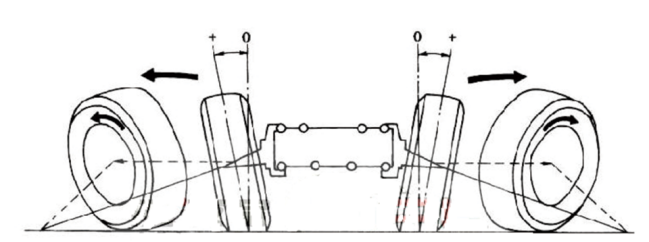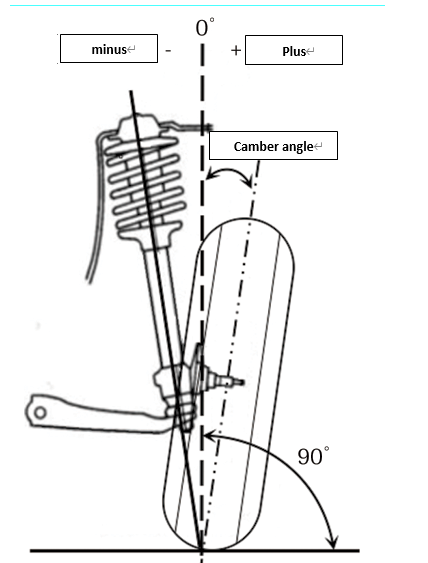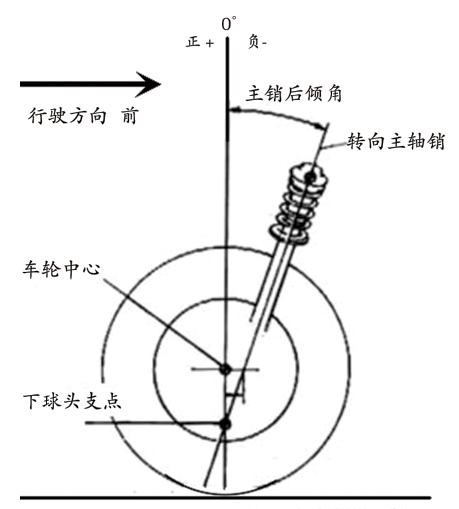

When the vehicle has been used for a long time, the user finds that the steering direction is heavy, shaking, deviation, misalignment, deviation, or tire unilateral wear, wavy wear, block wear, eccentric wear and other abnormal wear, as well as the user’s feeling of floating, bumping, rocking and other phenomena when driving, he should consider checking the wheel alignment value to see if there are too many deviations and repair it in timely.
In normal driving, the contact between tire and ground is different due to the different suspension structure of chassis of the vehicle model. All parts installed on the frame and body and the wheel and the wheel and wheel between the wheel and the ground have corresponding angle positions, so as to facilitate the vehicle to better ride stability and safety, and reduce the wear of tire and other parts. These angles are what we have done The angle of four wheel positioning needs to be adjusted, and each angle is closely related. Only the best position can be achieved by matching each other
The basic angles of four-wheel alignment include: toe in angle, camber angle, kingpin caster angle, thrust angle, retraction angle, wheelbase, containment angle, kingpin inclination angle, steering angle, rolling radius, friction radius, body frame height, Ackerman angle, etc.
Today, I mainly explain to you the angles that we often need to adjust: toe in angle, camber angle, kingpin caster angle and thrust angle.
Toe Angle
The angle between the center line of the tire and the longitudinal axis of the car is called the toe in angle when viewed from the up and down direction of the car. The toe in angle of the front end of the tire centerline is the positive toe in angle, otherwise it is the negative toe in angle. The total toe in value is equal to the sum of the toe in values of the two wheels, that is, the angle between the axis of the two wheels

As shown from above fig:
When a = B is 0, the angle between the two toes in wheels is equal
A < B is the angle between the two wheels of positive toe in, the front end is less than the rear end
Function and influence of toe in:
The main function of the bundle is to reduce tire wear and rolling friction and eliminate tire sideslip caused by camber angle. Too large difference in toe in (i.e. total)
If the toe in is too large or too small, it will cause tire abrasion, direction shaking, poor straightness and unstable steering.
Toe angle adjustment:
The adjustment of the toe in must be in the normal condition of other angles, and the steering wheel is positive, and the coaxial left and right are left and right under the premise of ensuring the normal general toe in
It’s all right to adjust the toe splitting to close to each other
2、Camber angle

Sideslip caused by camber
Camber angle:
The sideslip caused by camber angle is seen from the front of the car, and the top of the car wheel leans inward or outward at an angle, which is called wheel camber. Generally, the car’s roll angle is camber. It is indicated by the angle deviated from the vertical line. If the top tilts outward, it is called positive camber. If it tilts inward, it is called negative camber.

As shown from above Fig 3:
The angle between tire center line and plumb line is camber angle, which is negative camber angle inward and positive camber angle outward。
1、The effect and influence of camber angle
The function of camber angle is to increase the safety of straight-line driving. When there is camber angle, the offset of the wheel during steering can be reduced, so the steering force can be reduced; in addition, due to the kingpin camber, a component force applied on the axle center is generated under the vertical load, which makes the wheel press inward on the bearing to prevent the wheel from throwing off. Too much difference of single wheel camber angle will cause single wheel wear inside or outside, too much difference of two wheel camber angle will cause running deviation.
2、adjustment for camber angle
When adjusting the coaxially camber angle, the two wheels should be close to each other, and when driving normally, the tire will not be eaten.
3、Caster angle
From the side of the car, the kingpin axis (or wheel steering axis) tilts backward or forward from the vertical direction, an angle is called kingpin backward or forward
Lean forward. In the longitudinal vertical plane, the included angle between the kingpin axis and the vertical line is called the caster angle of the kingpin. The angle of inclination behind the vertical is called
A positive caster angle and a forward tilt angle are called negative casters. In general, the caster angle of the kingpin should be positive when the car is running. Analysis of kingpin caster angle
It is generally ensured by the mutual position of suspension elements during installation

As shown in the figure above: the angle between the center line of the vehicle steering main pin axis and the lead hammer line is the caster angle of the main pin, which is minus e forward and plus to the rear
4、The effect and influence of caster angle
The main pin tilt back is that when the vehicle is driven in a straight line and slightly deflected by external force, the backward inclination of the main pin will produce the moment of the wheel turning in the opposite direction, which can automatically correct the wheel, which can ensure the stability of the straight-line driving of the vehicle. The higher the rear inclination, the higher the vehicle speed, the greater the stability torque, but the rear inclination should not be too large, otherwise, the steering will lead to heavy steering. The caster angle of the main pin is formed when the front axle and suspension are installed to the frame
5、Caster adjustment
The left and right angles should be close to each other, otherwise it will cause deviation, heavy steering, and the direction will not automatically return to the right.
Thrust angle:
The bisection line of the angle between the front beam of the rear wheel of the automobile is called the propulsion line of the automobile, and the angle between the propulsion line and the geometric center line of the vehicle body is called the angle between the propulsion line and the geometric center line of the vehicle body
Propulsion angle
As shown from above Fig:The angle between the propulsion line and the geometric center line is the thrust angle
Thrust angle is to ensure that the vehicle driving and taxiing to maintain the integrity of the body, thrust angle is too large, resulting in gliding is not smooth, steering wheel is not right, and brake tail flick
After adjusting the toe in of the two wheels, the thrust angle is adjusted, that is, the left and right toe in of the rear wheel are close to each other, that is, the thrust angle is close to 0 °
Finally, the most regular adjustment in the four-wheel positioning process is the camber and the toe angle. All vehicle adjustment rules are: first adjust the rear wheel, then adjust the front wheel; the rear wheel first adjusts the camber angle and then adjusts the angle; the front wheel adjusts the main pin and then adjusts the inclination angle, then adjusts the camber angle and finally adjusts the angle. There is no absolute sequence between kingpin and wheelbase, because the angle of the front wheels affects each other. Other angle sequences must be standardized. And all the angles should be adjusted according to the principle of left and right symmetry in the process of adjustment, to ensure that the left and right angles are as consistent as possible (except for special vehicles). Some angles of most vehicles are not adjustable. We can complete the adjustment by means of external force, such as forced correction, refitting and replacement of parts!
If you want to know more about the locator, click to connecth ttps://www.roadbuck.net/contact/ , we will answer for you!
Apr-21-2021
admin